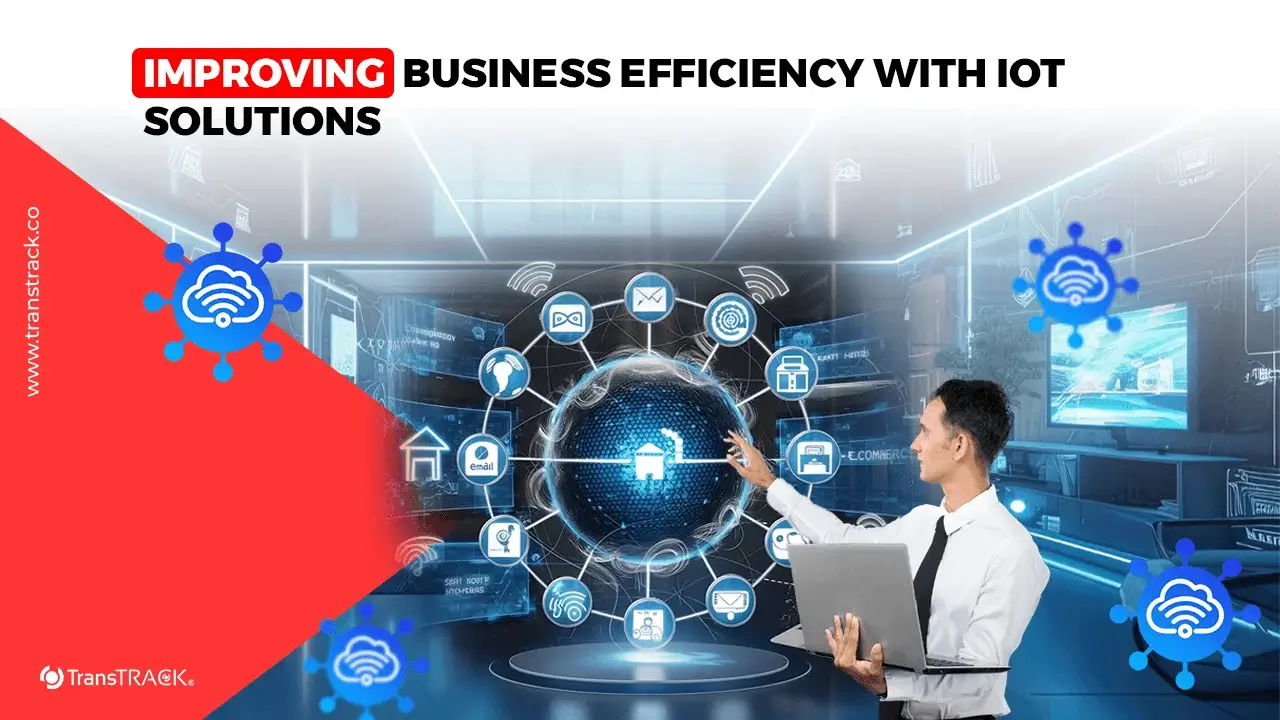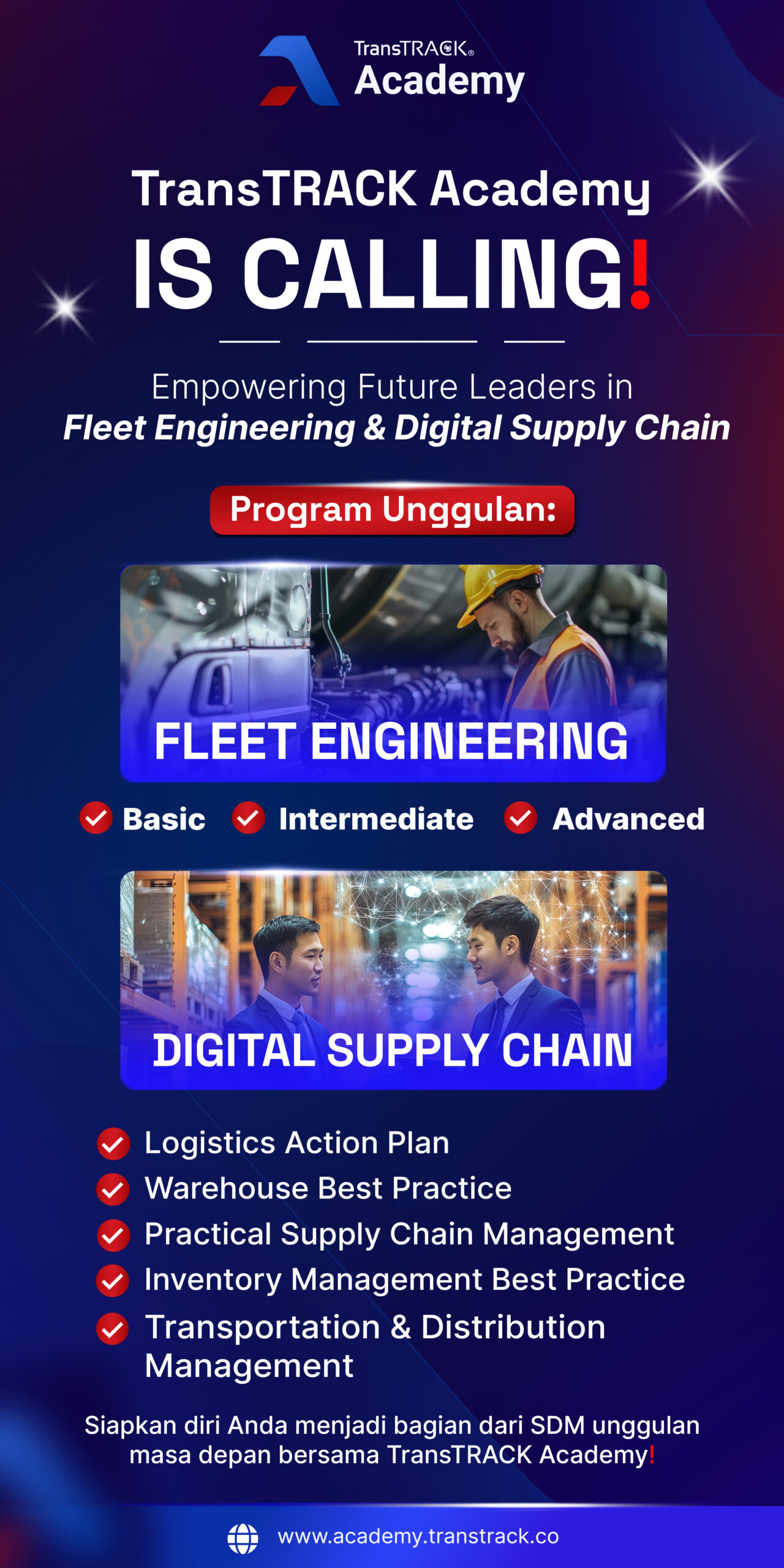Improving Business Efficiency with IoT Solutions
Posted on October 22, 2025 by Nur Wachda Mihmidati

Companies face complex challenges in managing assets, fleets, and daily operational processes. IoT Solution provides the answer by connecting physical devices to the internet, enabling real-time monitoring and control. With this technology, businesses can improve efficiency, productivity, and data visibility, resulting in faster and more accurate decision making. Read the full explanation in the following article TransTRACK !
Apa Itu IoT Solution?
IoT Solution (Internet of Things Solution) is a series of technologies, devices, and services that work together to connect physical objects to the internet so that they can communicate with each other, send data, and be operated automatically or remotely.
Simply put, IoT transforms everyday objects into “smart” devices with sensors and internet connectivity, then analyzes the resulting data to improve efficiency, security, and user experience.
Business Pain Points That IoT Can Solve
Modern companies face various operational challenges that impact efficiency, costs, and asset security. IoT solutions address these issues by utilizing sensors, connectivity, and data analytics, enabling businesses to monitor, control, and optimize processes in real time. Some of the key pain points that IoT can solve include:
Asset Tracking & Lost Items
IoT enables real-time tracking of assets or goods, thereby minimizing the risk of loss or misplacement.
Downtime & Unscheduled Maintenance
IoT sensors continuously monitor the condition of machines or equipment, enabling damage prediction and more efficient maintenance scheduling.
Fleet Performance / Transport & Logistics
With GPS and vehicle sensors, companies can monitor position, speed, fuel consumption, and route efficiency, improving fleet performance and reducing operating costs.
Operational Transparency & Data Visibility
Data collected from various operational points provides a comprehensive overview, supports decision-making based on accurate information, and facilitates auditing or reporting.
Key Benefits of IoT Solutions for Businesses
The implementation of IoT solutions does not only bring technology, but also has a real impact on business performance. With the ability to collect, analyze, and utilize data in real time, companies can improve operational effectiveness, reduce risks, and make more informed decisions. Some of the main benefits that can be obtained include:
Cost Efficiency & Resource Savings
IoT enables companies to monitor energy, raw material, and asset usage in real time. With this data, companies can reduce waste and optimize existing resources. As a result, operating costs can be reduced without compromising quality or performance.
Productivity Improvement & Automation
Time-consuming manual processes can be replaced with automated systems that operate 24/7. IoT accurately monitors and regulates production or operational activities. This increases output and team efficiency without adding to the workload.
Security & Risk Mitigation
IoT sensors detect potential problems such as machine damage, leaks, or theft early on. This information enables preventive action before losses occur. That way, companies can keep their assets and operations safe.
Data-Driven Competitive Advantage
Real-time data from IoT provides deep insights into operations and markets. Companies can make strategic decisions faster and more accurately than their competitors. As a result, innovation and business responses become more agile and measurable.
Steps to Choosing the Right IoT Vendor
Choosing the right IoT vendor is crucial to ensure smooth technology implementation and maximum benefits. Companies need to assess various aspects, from technical capabilities to service support, so that their IoT investment is truly effective. Some important steps to consider include:
Kriteria Teknis (Scalability, Security, Interoperability)
Ensure that IoT solutions can evolve alongside business growth without incurring significant additional costs. The system must also be secure from cyber threats and capable of integrating with other devices or platforms. This ensures that the solution remains relevant and reliable in the long term.
Support & After-Sales Service
A good vendor provides ongoing technical support and maintenance. This is important for handling operational issues and system updates. Responsive after-sales support helps companies maximize the ROI of their IoT investments.
Referensi & Track Record
Check the vendor’s previous experience and successful projects. Client testimonials and case studies provide an overview of service quality and implementation capabilities. Choose a vendor with a proven reputation to minimize the risk of failure.
Regulatory Compliance & Privacy
Ensure vendors comply with data security standards and local and international regulations. Protecting user privacy and company data should be a top priority. This compliance prevents legal issues and increases stakeholder trust.
By adopting IoT Solutions, companies not only improve efficiency and productivity, but also gain full visibility into their operations and assets. This technology enables data-driven decision making, risk mitigation, and a real competitive advantage in the marketplace.
Improve fleet management and optimize your logistics with the Fleet Management System from TransTRACK—an IoT solution designed to monitor vehicles, maximize performance, and reduce operational costs in real time. Take your business to the next level with a reliable and proven system.

FAQ IoT Solution
1. Why do businesses need IoT solutions?
IoT solutions help companies monitor and manage assets and operations in real time. This reduces risk, improves efficiency, and supports data-driven decision making. With IoT, businesses can adapt more quickly to market changes.
2. What are the benefits of IoT in company operations?
The main benefits include cost savings, increased productivity, improved security, and more transparent operational visibility. IoT also enables process automation and resource optimization. As a result, companies become more efficient and competitive.
3. How does the IoT solution integrate with the company’s systems?
IoT can connect to ERP, CRM, or other internal platforms through APIs or cloud-based integration. Data from sensors and IoT devices is collected and analyzed to support existing business processes. This integration ensures a smooth flow of information and faster decision-making.
4. How much does it cost to implement IoT for businesses?
Costs vary depending on the scale, complexity of the system, number of devices, and integration requirements. The initial investment typically includes devices, IoT platforms, and installation or configuration services. However, savings in operating costs and increased productivity usually make the ROI significant in the medium term.
5. How can IoT improve fleet and logistics efficiency?
With GPS, vehicle sensors, and monitoring platforms, companies can monitor the location of their fleets, vehicle conditions, and delivery schedules in real time. IoT helps optimize routes, reduce downtime, and lower fuel consumption. As a result, operating costs are reduced and logistics services become more reliable.
Recent Post
Topic :
 Bahasa Indonesia
Bahasa Indonesia









